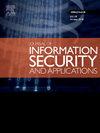Wi-Spoof: Generating adversarial wireless signals to deceive Wi-Fi sensing systems
IF 3.7
2区 计算机科学
Q2 COMPUTER SCIENCE, INFORMATION SYSTEMS
Journal of Information Security and Applications
Pub Date : 2025-04-15
DOI:10.1016/j.jisa.2025.104052
引用次数: 0
Abstract
The rise of Wi-Fi sensing applications leveraging Channel State Information (CSI) from ambient wireless signals has opened up extensive opportunities for human activity and identity recognition. However, this advancement raises serious privacy concerns, as sensitive personal data can be inferred by applying advanced Machine Learning (ML) algorithms to CSI data. In response, researchers have explored adversarial techniques to degrade Wi-Fi sensing accuracy and protect privacy, often by interfering with or corrupting CSI. This paper introduces Wi-Spoof, a novel approach for spoofing CSI to deceive Wi-Fi-based Human Activity Recognition (HAR) systems. Wi-Spoof manipulates Wi-Fi transmission power to inject noise into the CSI and employs a pseudo-Pulse Width Modulation (PWM) scheme to generate controlled, adversarial CSI. Using commercially available hardware, we experimentally demonstrate that Wi-Spoof can achieve targeted misclassification in a state-of-the-art HAR system with a 93% success rate. Our approach is validated on a widely recognised public dataset and further supported by extensive local experiments, underscoring Wi-Spoof’s effectiveness in steering HAR predictions to specified outcomes.
Wi-Fi欺骗:产生对抗性无线信号来欺骗Wi-Fi传感系统
利用环境无线信号中的信道状态信息(CSI)的 Wi-Fi 传感应用的兴起,为人类活动和身份识别带来了大量机会。然而,这一进步引发了严重的隐私问题,因为通过对 CSI 数据应用先进的机器学习(ML)算法,可以推断出敏感的个人数据。为此,研究人员探索了对抗性技术,通常通过干扰或破坏 CSI 来降低 Wi-Fi 感知的准确性并保护隐私。本文介绍了 Wi-Spoof,这是一种欺骗 CSI 的新方法,用于欺骗基于 Wi-Fi 的人类活动识别(HAR)系统。Wi-Spoof 操纵 Wi-Fi 传输功率向 CSI 注入噪声,并采用伪脉冲宽度调制(PWM)方案生成受控的对抗性 CSI。我们利用市售硬件,通过实验证明 Wi-Spoof 可以在最先进的 HAR 系统中实现有针对性的误分类,成功率高达 93%。我们的方法在一个广受认可的公共数据集上得到了验证,并得到了大量本地实验的进一步支持,突出了 Wi-Spoof 在将 HAR 预测导向特定结果方面的有效性。
本文章由计算机程序翻译,如有差异,请以英文原文为准。
求助全文
约1分钟内获得全文
求助全文
来源期刊

Journal of Information Security and Applications
Computer Science-Computer Networks and Communications
CiteScore
10.90
自引率
5.40%
发文量
206
审稿时长
56 days
期刊介绍:
Journal of Information Security and Applications (JISA) focuses on the original research and practice-driven applications with relevance to information security and applications. JISA provides a common linkage between a vibrant scientific and research community and industry professionals by offering a clear view on modern problems and challenges in information security, as well as identifying promising scientific and "best-practice" solutions. JISA issues offer a balance between original research work and innovative industrial approaches by internationally renowned information security experts and researchers.
 求助内容:
求助内容: 应助结果提醒方式:
应助结果提醒方式:


